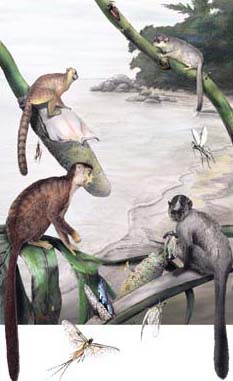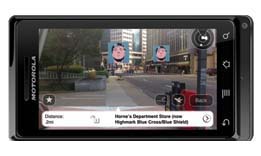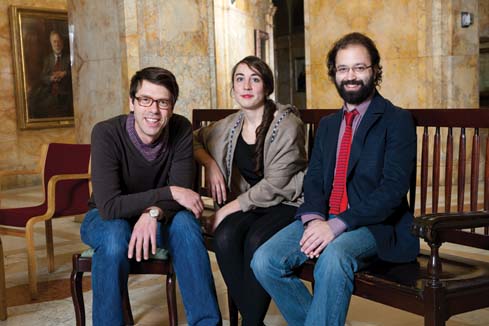 Winter 2010
Winter 2010|
|
| Individuals & Families Anonymous Alice S. and James S. Beckwith III Bob and Irene Bozzone Suzy and Jim Broadhurst Milton and Sheila Fine The Chester G. Fisher Family Edith H. and James A. Fisher Lee and Isabel Foster Mr. and Mrs. Stanley R. Gumberg Mrs. Henry J. Heinz Mr. and Mrs. Henry L. Hillman William Talbott Hillman The Roy A. Hunt Family Virginia Kaufman Peter S. and Jill G. Kraus Alan G. and Jane A. Lehman Foundation at the request of Ellen Lehman and Charles Kennel Paul Mellon John G. Rangos Sr. Family William R. Scott Mr. and Mrs. Richard P. Simmons Juliet Lea H. Simonds W. P. Snyder III Rachel Mellon Walton Family Robert S. Waters |
Foundations, Corporations, and Organizations Anonymous Alcoa Foundation Bayer USA Foundation Claude Worthington Benedum Foundation BNY Mellon The Buhl Foundation The Philip Chosky Charitable and Educational Foundation The Colcom Foundation Eden Hall Foundation The Grable Foundation H. J. Heinz Company Foundation Heinz Endowments Highmark Mary Hillman Jennings Foundation The Kresge Foundation Laurel Foundation Katherine Mabis McKenna Foundation Andrew W. Mellon Foundation Richard King Mellon Foundation The Pittsburgh Foundation PNC PPG Industries Foundation Scaife Family Foundation United States Steel Foundation, Inc. UPMC The Andy Warhol Foundation for the Visual Arts, Inc. Women’s Committee, Carnegie Museum of Art |
Into Africa? Evidence suggests primates colonized Africa from Asia
 The discovery of four ancient, palm-sized primates in what is now Libya further suggests the human family tree originated in Asia, not Africa.
The discovery of four ancient, palm-sized primates in what is now Libya further suggests the human family tree originated in Asia, not Africa.
The conventional narrative places the origins of anthropoids—the group of primates that includes all monkeys, apes, and humans—in Africa. But some paleontologists, including Chris Beard, Carnegie Museum of Natural History’s Mary R. Dawson Chair of Vertebrate Paleontology, have long contended that they originated in Asia. This quest for information about the origins of man’s earliest ancestors remains one of the most hotly pursued subjects in paleontology.
Illustration: Mark Klingler
Beard, a world-renowned expert on early primates, is among the co-authors of a paper describing the new primates, published this past October in Nature. What’s exceptional about these new fossils, says Beard, is their diversity. They represent three distinct families of anthropoids that lived in North Africa at approximately the same time, about 39 million years ago, which suggests that anthropoids evolved before the time of these newly discovered fossils. Could the diversity and timing of the new anthropoids simply be the result of a gap in the earlier African fossil record? Beard and his fellow international researchers think otherwise, as the area has been well sampled over the past century. Instead, this latest discovery suggests that it’s more likely that several anthropoid species “colonized” Africa from another continent.
“If our ideas are correct, this early colonization of Africa by anthropoids was a truly pivotal event—one of the key points in our evolutionary history,” explains Beard. “At the time, Africa was an island continent; when these anthropoids appeared, there was nothing on that island that could compete with them. It led to a period of flourishing evolutionary divergence among anthropoids, and one of those lineages resulted in humans.”
Warhol for your smart phone—and your kids
In the spirit of its namesake, The Warhol is constantly experimenting with ways to respond to, and create, popular culture. That means staying ahead of the curve in the tech world. The museum’s latest smart phone app—available for download from its recently redesigned website at Warhol.org—is getting big props for literally allowing fans to follow in Andy’s footsteps.
 The Andy Warhol Museum app is a layer for the augmented reality browser, Layar. It uses augmented reality technology to display real-time digital information on top of real-world locations as seen through the camera of an iPhone or Android. In other words, you can point your smart phone at the street and view places Andy left his mark—his childhood home on Dawson Street; his alma matters of Schenley High School and Carnegie Mellon; and Carnegie Museum of Art, where he took Saturday art classes as a kid. The app offers a viewable range of 1,000 miles—so even from Pittsburgh, you can also catch a glimpse of Warhol’s New York City hangouts, including The Factory (now underground parking) and Studio 54. Users are also rewarded with exclusive access to related tidbits and photographs provided by Warhol educators.
The Andy Warhol Museum app is a layer for the augmented reality browser, Layar. It uses augmented reality technology to display real-time digital information on top of real-world locations as seen through the camera of an iPhone or Android. In other words, you can point your smart phone at the street and view places Andy left his mark—his childhood home on Dawson Street; his alma matters of Schenley High School and Carnegie Mellon; and Carnegie Museum of Art, where he took Saturday art classes as a kid. The app offers a viewable range of 1,000 miles—so even from Pittsburgh, you can also catch a glimpse of Warhol’s New York City hangouts, including The Factory (now underground parking) and Studio 54. Users are also rewarded with exclusive access to related tidbits and photographs provided by Warhol educators.
And for The Warhol’s youngest audience, its latest low-tech offering is just as cool: a coloring book illustrated by Kristoffer Smith, a young graphic artist who started working at the museum when he was still in high school. It’s another fun and interactive way of introducing Warhol’s artistic practices to a new generation.
Bayer takes center stage in the name of science
 By making science both relevant and fun, Carnegie Science Center’s goal is to increase science literacy in the region and motivate young people to seek careers in science and technology. In Bayer Corporation, a longtime collaborator, the Science Center has found the perfect partner.
By making science both relevant and fun, Carnegie Science Center’s goal is to increase science literacy in the region and motivate young people to seek careers in science and technology. In Bayer Corporation, a longtime collaborator, the Science Center has found the perfect partner.
In its latest act of generosity, Bayer is the new sponsor of the Science Center’s 300-seat theater, renaming it the Bayer Science Stage. Each year, more than 10,000 visitors attend more than 200 productions, shows, lectures, and presentations in the first-floor space. Weekly productions, such as “Wheel of Science”—exploring the science of fireworks, Newton’s laws of motion, and combustion in a high energy show—entertain and educate
hundreds of school groups and the general public.
“Bayer Corporation has been committed to helping educate the next generation of scientists and engineers for more than 40 years,” says Greg Babe, president and CEO of Bayer Corporation. “That’s why our relationship with Carnegie Science Center is so important. Now, through the ‘Bayer Science Stage,’ we will continue to provide an atmosphere that inspires children of this region to explore the sciences.”
Bayer Corporation has been a corporate sponsor of Carnegie Science Awards and the Regional SciTech Initiative for more than a decade; it’s supported the C.A.U.S.E Challenge™ High School Film Festival since its inception in 2005; and through its Making Science Makes Sense initiative, the company continues to support the efforts of programs like the Girls, Math & Science Partnership.
Putting the Magic in the Miniature Railroad · The Things They Carried · The Expressionist · In Search of the Arabian Horse · Directors' Note · Face Time: Marilyn Russell · Science & Nature: A Walk with the Dinosaurs · Artistic License: Finding Joy in the Moment · Field Trip: Oh, the Places They Go · The Big Picture
 |
Copyright © 2017 CARNEGIE Magazine. All rights reserved. |

